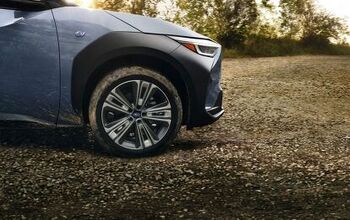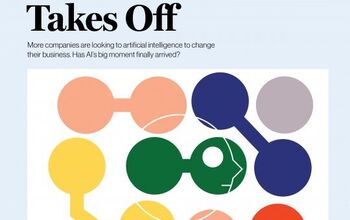Here Comes The Power!
J.D. Power has released the results of its 2010 Initial Quality Survey (IQS). As in previous years, the release stresses that Detroit has improved, but now to the point that the average for GM, Ford, and Chrysler is for the first time higher than that for the imports. J.D. Power’s sound bite: “This year may mark a key turning point for U.S. brands as they continue to fight the battle against lingering negative perceptions of their quality.”
Interesting choice of words. The battle to change perceptions is often fought with ads. What information might ads include to assist in this fight?
Anyway, we all know better than to base our perceptions on headlines and self-serving sound bites, right? As tends to be the case, a deeper dig muddies the waters. To begin with, J.D. Power continues to assert that a low number of problems during the first 90 days of ownership should allay any concerns a car buyer might have about a car’s quality. But of course car buyers are most concerned about how a car will hold up in the long run.
Initial quality sometimes correlates with long-term durability, but there’s only a partial connection between the two. Initial quality can result from solid engineering, which will also benefit long-term durability. But strong initial quality can also follow from thorough inspections at the plant or dealer. Such inspections can catch and fix problems that happen to occur before delivery, but aren’t likely to reduce problems down the road.
J.D. Power’s scores also continue to combine design quality—how easy a car is to operate—and manufacturing quality—repairable defects. These are two very different things, but no subscores are provided in this year’s release. The inclusion of design quality might explain why BMW remains below the industry average—it tends to take a big hit for iDrive. A few years ago, Mercedes reacted by providing car buyers with more thorough instruction in how to operate its cars. Which might largely explain the brand’s #3 rank. Then again, both the current C-Class and the new E-Class have also scored well in TrueDelta’s Car Reliability Survey, which strictly measures repairs and doesn’t seek to combine every sort of product-related complaint into a single score.
Ideally, we’d look at the IQS scores for individual models, since people buy a model and not an entire brand. But, aside from a selection of top-scoring models, J.D. Power continues to only publicly release scores for brands.
Even a glance at the IQS brand scores suggests the pointlessness of thinking in terms of “domestic” and “imported.” On the domestic side, only Ford seems to be doing consistently well, and has improved to the highest rank for a non-luxury brand. GM’s score actually declined a little this year, and its quality continues to vary quite a bit from model to model, with some good ones and other not-so-good ones. Chrysler continues to be consistently worse than average, though the new Ram is touted as a bright spot.
The “imports” range from Porsche in the top spot all the way down to perennial basement-dweller Land Rover. What does labeling them all as “imports” accomplish other than enabling intellectual laziness?
The big story on the import side is that Toyota’s score declined by 16 points, landing it below average. J.D. Power notes, “Recent consumer concerns regarding Toyota’s quality are reflected in the nameplate’s performance.” Additional details would be helpful, but are not provided. Could a concern about unintended acceleration count as a problem? Recalls are not supposed to count, but could some mat and pedal replacements have been included anyway? Responses to TrueDelta’s Car Reliability Survey have not indicated an increase in repairs for Toyotas, but we are much stricter than J.D. Power with regard to what counts as a problem.
In contrast to its parent, Lexus continues to score among the best.
As usual, all of this talk about where brands rank obscures how large the differences actually are (or are not). As in the past, the differences tend to be small. The average this year, 109 problems per 100 cars, is a single problem per 100 cars worse than last year. Not much of a change. Nevertheless, Automotive News headlines this decline, and credits Toyota for it. The number of brands within 20 percent of this average? Twenty-six out of 33. Fifteen—nearly half—are within 10 percent of the average. And all of them except for Land Rover round to a single problem per car.
The differences are no doubt larger between models. And, for most people, it’s probably good enough to avoid the few outliers near the botton. But, as already noted, J.D. Power publicly releases the scores for very few car models, and even these exceptions are for top-scorers. If you want to know which specific models score well below the average, you’ll need to find another source. J.D. Power isn’t going to tell you.
Michael Karesh operates TrueDelta, a provider of automotive quality and reliability data.
Michael Karesh lives in West Bloomfield, Michigan, with his wife and three children. In 2003 he received a Ph.D. from the University of Chicago. While in Chicago he worked at the National Opinion Research Center, a leader in the field of survey research. For his doctoral thesis, he spent a year-and-a-half inside an automaker studying how and how well it understood consumers when developing new products. While pursuing the degree he taught consumer behavior and product development at Oakland University. Since 1999, he has contributed auto reviews to Epinions, where he is currently one of two people in charge of the autos section. Since earning the degree he has continued to care for his children (school, gymnastics, tae-kwan-do...) and write reviews for Epinions and, more recently, The Truth About Cars while developing TrueDelta, a vehicle reliability and price comparison site.
More by Michael Karesh
Latest Car Reviews
Read moreLatest Product Reviews
Read moreRecent Comments
- Varezhka Maybe the volume was not big enough to really matter anyways, but losing a “passenger car” for a mostly “light truck” line-up should help Subaru with their CAFE numbers too.
- Varezhka For this category my car of choice would be the CX-50. But between the two cars listed I’d select the RAV4 over CR-V. I’ve always preferred NA over small turbos and for hybrids THS’ longer history shows in its refinement.
- AZFelix I would suggest a variation on the 'fcuk, marry, kill' game using 'track, buy, lease' with three similar automotive selections.
- Formula m For the gas versions I like the Honda CRV. Haven’t driven the hybrids yet.
- SCE to AUX All that lift makes for an easy rollover of your $70k truck.

































Comments
Join the conversation
Having spent 30 years selling 7k+ new vehicles to individual owners (Ford, GM, Chrysler, Toyota, Nissan, BMW) I have observed the following: 1) There is a difference in dealer prep, if the prep personal actually did everything on the manufacturer's prep sheet there would be far fewer initial defects. The dealer's prep department is supposed to be the final quality check before delivery to the consumer. Makes sense, a complicated piece of machinery built on an assembly line actually being thoroughly inspected by qualified personal. What a novel concept. In my experience the BMW dealership was in a league of it's own but one of the Ford and one of the GM stores were also noteworthy. On the other hand I have experienced a very successful dealer that said in a factory meeting in regards to the subject of new car prep facilities "All I'm buying is soap and water." 2) Occasionally there were factory built defects (maybe like using undersized pistons because that's all they had at the engine plant-1977 Mercury Cougar 351 2bbl Atlanta final Assembly-ancient history-don't remember engine plant, maybe Windsor as differentiated from Cleveland). 3) Individual dealers make the difference, watched while employed there the local Nissan dealer had the front bumper cover of an expensive (read 3.5L Altima with every single friggen option, 35K MSRP four years ago-vehicle was ordered by Nissan not dealer for initial inventory-new dealership-we had a 43k MSRP Quest too-battery always dead on showroom floor) resprayed front bumper cover due to lot damage in the display area by an individual whose business was touching up used cars. On a very windy day. Mind boggling. On a side note it took forever to sell this car and I'm pretty sure it was because the MSRP was more than every Maxima. Same with the ultra premium Quest. Nissan apparently uses their new dealerships (read brand new facility built to Nissan state of the art specs) to test the capability or lack thereof of the assembly plants. And by the way Nissan sent us every unsold previous model year 350Z in an 800 mile radius-dealer did have to agree to accept. 4) The bottom line IMO for TTAC's BB, the only reason we read and contribute to this site is because we really enjoy the automotive industry and our vehicles whatever they may be. I'm personally thankful this site exists and enjoy everyone's contributions. I'm still chuckling about Jack Baruth's Infiniti story.
This is a useless survey which exists primarily so car manufacturers can use it in their ads. No one is ever going to make up their minds, or even shortlist cars, based on this.